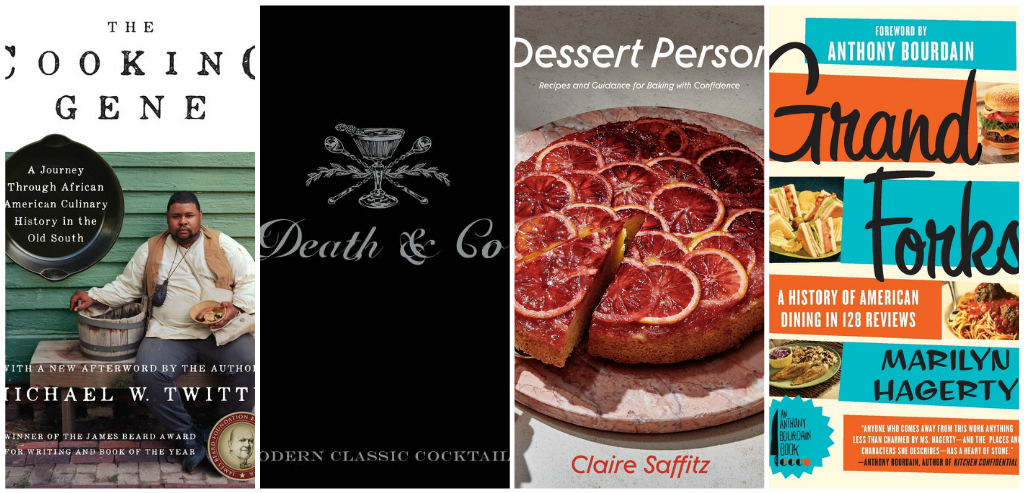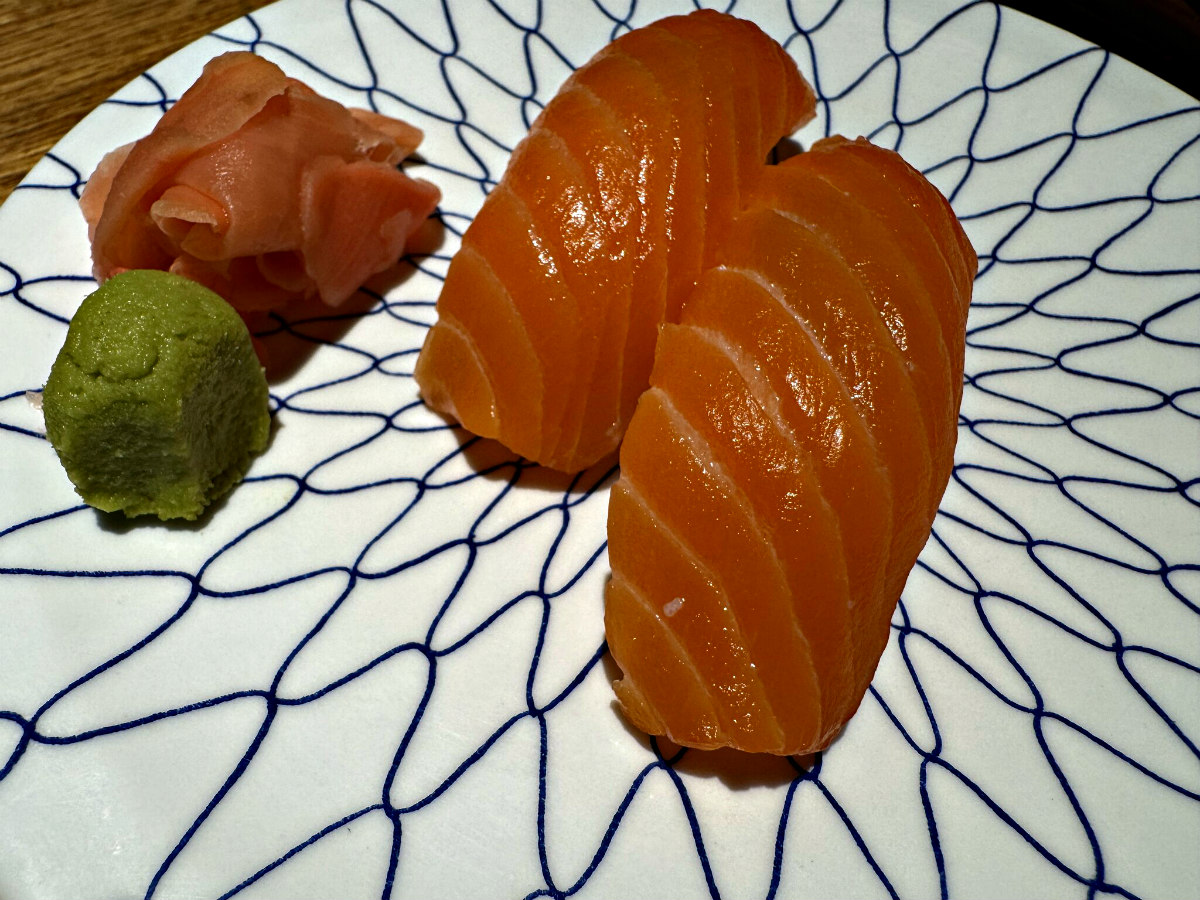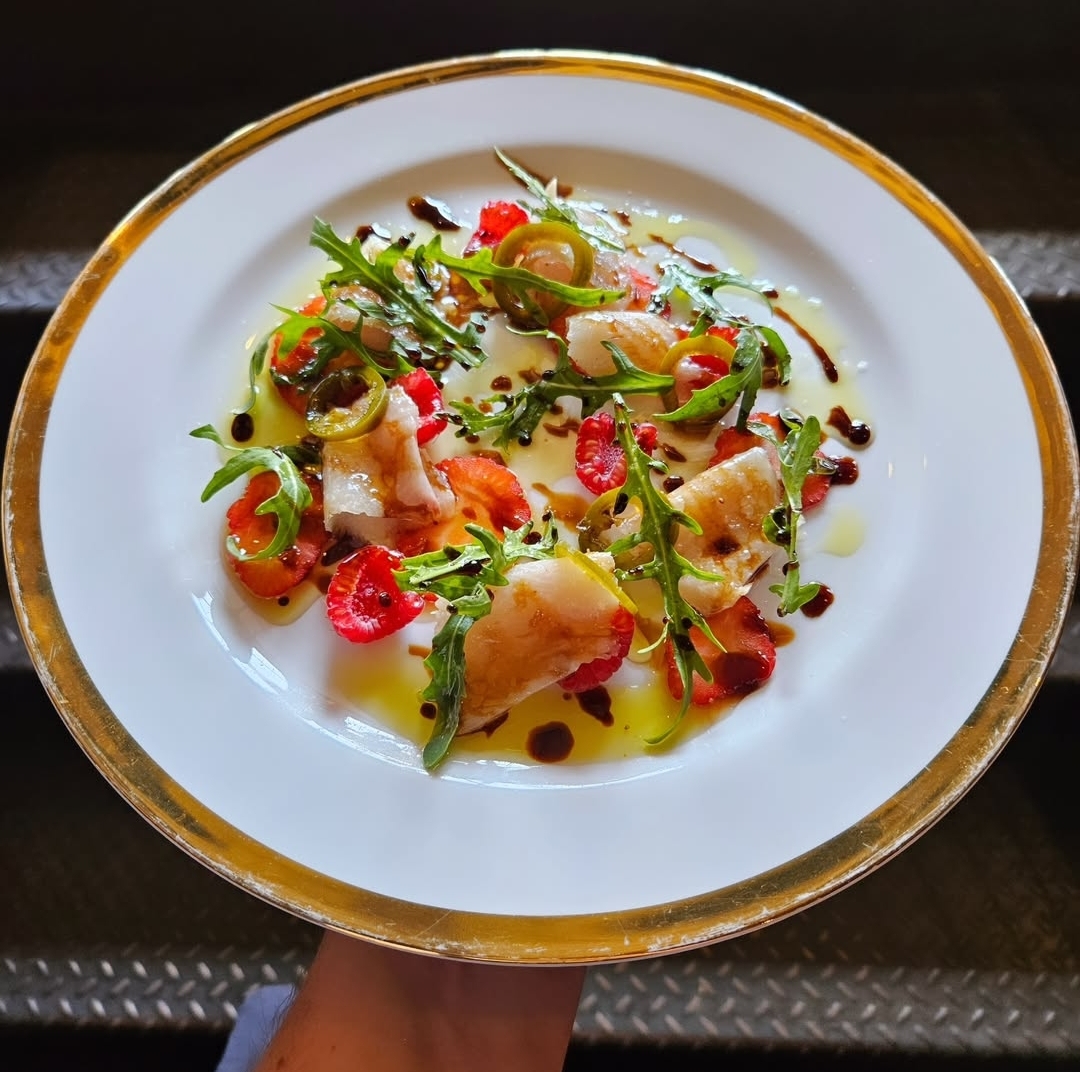When Tiny House Bar owner Megan Malone asked me what my favorite cookbooks were, it led to a great idea: Let’s have a selection available at the Tiny House Holiday Scholastic Book Fair, which is this coming Wednesday, November 16.
It has been a pleasure not only to pull together a partial list of favorites, but also to work with The Bookworm, one of Omaha’s favorite local bookstores, on the project. I’ve tried to include a variety of old and new favorites, different types of cuisine, diverse authors and a couple of food books that include recipes, too.
The first dozen will be available at the Scholastic Book Fair, the rest you can find at your local library or online. Without further ado, some favorites.
Books available at the Tiny House Book Fair
The Cooking Gene, Michael Twitty
The Cooking Gene takes a deep dive into the history of the old south, and tells the story of how the enslavement of Africans by European settlers has influenced our food culture. Twitty tells the story through his own research and his own family’s genealogy. As he learned how to cook, he also learned to accept his own heritage, entwined with the history of soul food. He also talks about his conversion to Judaism, and wraps souther Judaism into the story. I couldn’t put this one down.
Dessert Person, Claire Saffitz
Like many people, I fell in love with Claire when she was on the “Bon Appetit” YouTube channel attempting to remake packaged treats and snacks. But she’s moved far beyond those (often harrowing) videos, releasing two cookbooks and her own charming YouTube presence, where she makes mostly desserts but some savory dishes, too. In particular, I’ve enjoyed making her soft and crispy focaccia, pistachio pinwheel cookies, almond butter banana bread and her rough puff pastry recipe is my go-to.
Nothing Fancy by Alison Roman
My copy of “Nothing Fancy” immediately falls open to the recipe for “a very good lasagna,” and, as you might imagine, it is a very good lasagna. I have made her slow roasted oregano chicken with buttered tomatoes more times than I can count. I have also used my Rancho Gordo bean club membership several times on one of her snack recipes, butter beans marinated in vinegar. They taste great on a cheese board.
The Death and Company Cocktail Book
The Death and Company Cocktail book, from the New York (and now several locations) original craft cocktail bar is heavily used in our house. Matthew uses the section focused on classics to make almost any drink one of us might desire: Boulevardiers, Negronis, Margaritas, Manhattans. They’re all there, and they all turn out to be some of the best versions of the classics, especially when compared with some of the same recipes in other books we own. While their section of original drinks is almost impossible to pull off, even for a household like ours with a pretty complete bar, this book is worth it alone for the solid, always great versions of drinks you know and love.
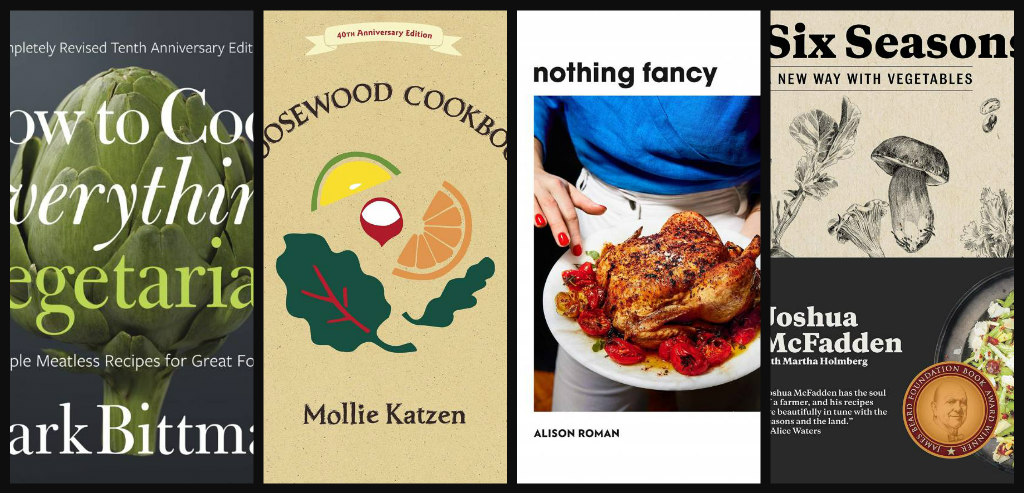
Essentials of Italian Cooking, Marcella Hazan
My sister gave me this book for Christmas in a past year, and let me just say, buying this one is worth it alone for Marcella’s classic bolognese meat sauce. This is another example of when my book falls right open to page 203 in the “pasta” chapter. This recipe, for me, is a wintertime classic, and I follow each step to a tee, including cooking the meat in milk, which somehow results in an absolutely perfect sauce.
Perfectly Golden, Angela Garbacz
I made Lincoln-based baker Angela Garbacz’s apple pie with oat streusel during last year’s holiday season, and her vegan pesto babka bread has become a holiday staple. The book’s “best pound cake” which can be made both dairy and gluten-free, is wonderful. Her morning buns are on my agenda this holiday season. Every recipe can be made either gluten or dairy free, and with several celiacs in my life and my family, this has been especially wonderful.
How to Cook Everything Vegetarian, Mark Bittman
This is the book that taught me how to cook. Many moons ago, I spent a few years as a pescatarian, and I bought this book after trying my hand at several of Bittman’s New York Times “minimalist” recipes, which ran in the paper. I vividly remember the first time I made his ketchup braised tofu, which I still love to this day. His pasta frittata was so useful for a beginning cook, like I was. Matthew, the person who cooks eggs on weekend mornings at our house, regularly turns to Bittman’s best scrambled eggs. This would be a great gift for a young person — How to Cook Everything, which includes meat-focused recipes, is equally as good.
Six Seasons, Joshua McFadden
I bought this wonderful seasonally-focused vegetable book after I ate at McFadden’s restaurant Ava Gene’s in Portland, Oregon, and was wowed by the vegetables he served more than any other dishes. It’s a book I turn to in particular this time of year, because it makes wonderful hay of vegetables like beets, squash and cabbage. Summer is handily divided into three sections, and as the produce ebbs and flows throughout the year, this book is a wonderful reference point.
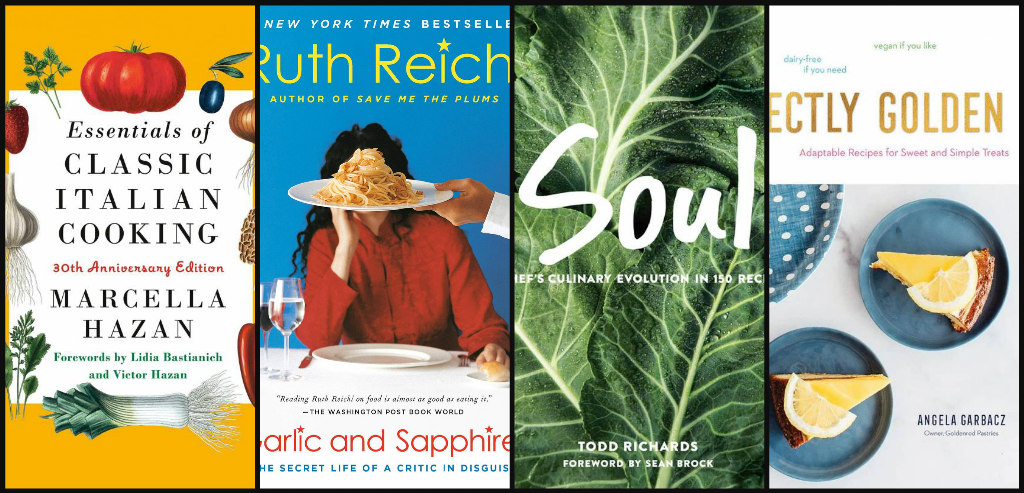
Soul, Todd Richardson
I read “Soul” around the same time that I read “The Cooking Gene,” and both books contributed to a big jump in my understanding and appreciation of Southern cooking and soul food. Each chapter starts with a traditional soul food recipe, and then tilt more modern. For example, the section on collard greens begins with a classic recipe, and then swerves to collard green ramen and a collard green breakfast sandwich. I can’t wait to make Richardson’s cornbread this holiday season, to be used in my mom’s very old fashioned cornbread stuffing recipe.
The Moosewood Cookbook, Mollie Katzen
I first heard of this 1970s classic after I ate at Grateful Bread, in Lincoln, and learned that the base recipes for many of their absolutely delicious vegetarian soups started with recipes in this book. My copy is a used paperback version, and the vegetable, bean and lentil soups and stews in this book remain some of my absolute favorites. Also, the illustrations are so sweet and retro.
Grand Forks, Marilyn Hagerty
Marilyn Hagerty brings me so much joy. She had 15 minutes of uber fame around 2012, when Anthony Bourdain discovered her no-nonsense restaurant reviews for the Grand Forks Herald in Grand Forks, North Dakota, and turned them into this charming, funny, sweet read. Yeah, she famously reviews the Olive Garden, but she also reviews local holes in the wall with a straightforward voice and knowledgable perspective. Hagerty, who is now 96, was still writing for the Grand Forks paper just two years ago, Pete Wells reports.
Garlic and Sapphires, Ruth Reichl
The day I met and got to briefly interview Ruth is (as cliche as it sounds) a day I will never forget, my sweaty palms and probably silly questions included. Her book about how she became the New York Times food critic — the first woman to ever hold the job — is a page turner for sure. Her legendary costumes, and the personas she created to go along with each one, are also legendary. When she writes about her reviews, the review itself follows her story, a particular delight.
Some other cookbooks I love
New Prairie Kitchen, Summer Miller
My long-time friend and colleague Summer Miller wrote a wonderful book about Midwestern cuisine, telling stories of local chefs and their restauranteurs and producers, and then places their recipes and stories in order of the seasons, many punctuated by Omaha photographer Dana Damewood’s beautiful photos. The book’s rice and kale stuffed squash with pecan gomashio is on the menu at our house this week; Omahans in particular I think will appreciate this book, and recognize many familiar faces.
New Midwestern Table, Amy Thielen
I have never met Amy, but I feel like I know her because we share the same food histories. Similar to Miller’s book, New Midwestern Table includes stories of chefs and restaurants from across the Midwest region, including several in Omaha. But then Thielen takes off, reinventing regional classics like Runzas and hot dish for a new generation of cooks and palettes. And on top of that, she’s just a really good writer.
See you on Sunday and Thanksgiving, Sam Sifton
I think Sam Sifton is just a great writer. Often his books make me laugh out loud. See You on Sunday is a great book that I think fell off the radar because it came out right before the pandemic started and it’s about hosting big gatherings on Sunday, something we all desperately missed for a period of years. But I pulled it out again and it made sense anew: cooking for groups and feeding friends is one of my favorite things to do. And speaking of that, Thanksgiving, Sifton’s slim book devoted to the holiday, is a fun quick read in the weeks before Thanksgiving arrives; I can’t wait to try out several of his dishes over the coming weeks. If you want to be the consummate host, start with these two.
America’s Test Kitchen Soups, Stews and Chilis
I have about six bookmarks (post it notes, printed recipes, postcards) in my copy of this soup, stew and chili focused book. Two of my all-time greatest hits that I served at our annual soup party to immense success come from this book: creamless creamy tomato soup (great for the dairy-free folks in your life, and the dairy-loving folk in your life will have no idea what’s missing) and a new version of the classic U.S. Senate navy bean soup. I love ATK books because the recipes are carefully tested and, if I’m honest, I don’t think I’ve ever encountered a stinker.
The New York Times Cookbook, Craig Claiborne
This vintage tome is one of my favorites (I have an enormous collection of vintage cookbooks) and I would have loved to meet Craig Claiborne. I have several of his books, and, along with James Beard, he is one of my favorite retro cookbook authors. He understands the art of entertaining, and there’s no shortage of complex but fun sounding recipes in this book. Have I ever made one? Well, no. But I will.

